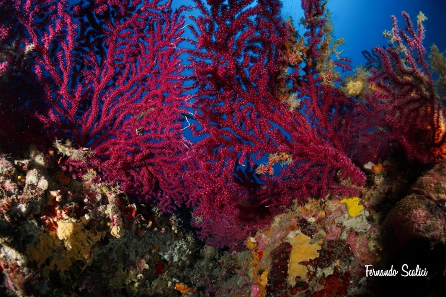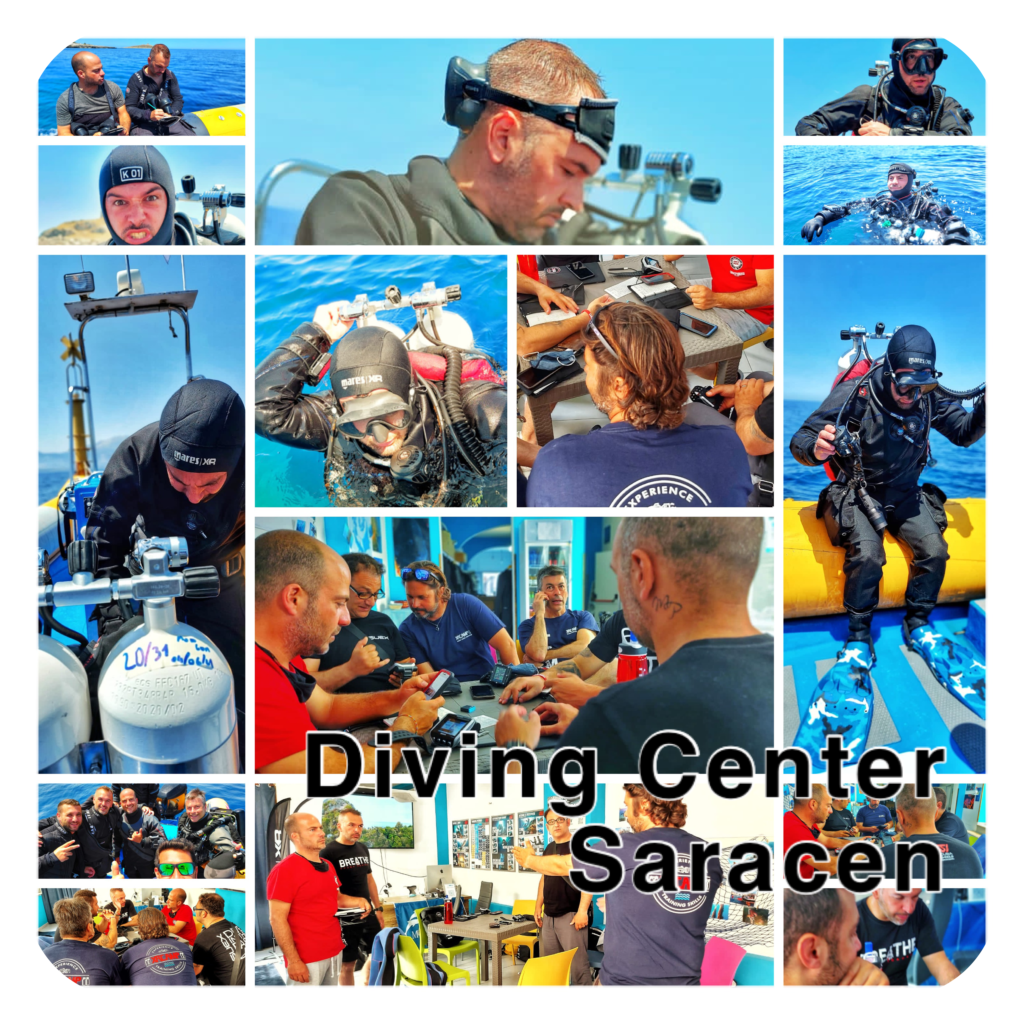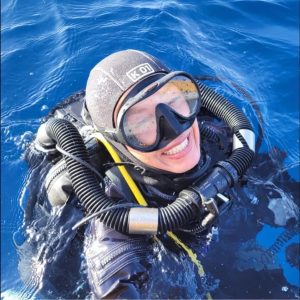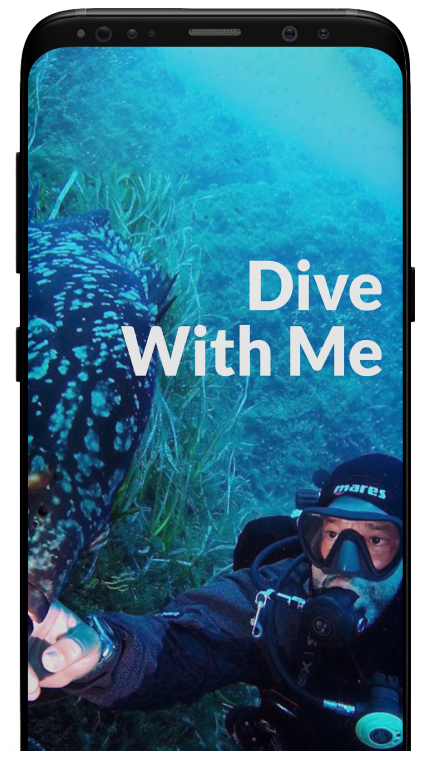Two fantastic dives in the Marine Protected Area of Capo Milazzo. Among huge fans of red gorgonians, branches of Gerardia, madrepores, gorgon stars, groupers and barracudas. And then the black coral.
Saturday November 20, 2021, 5:30 am.
Woken up by Katrina & The Waves with “Walking on sunshine”, I jumped out of bed. Despite a week full of work and family commitments.
That day, with my wonderful subTek friends, Rosalba and Silvia from the Diving Center Saracen in Isola delle Femmine (Pa), we were going away to Milazzo for two dives in the Capo Milazzo AMP!!

Blunauta Diving Center Milazzo
After 207 km, we finally reached paradise at Mauro Alioto’s Blunauta Diving Center. Who welcomed us with such kindness and concern. Considering the state of over-saturation of the machine, it graciously helped us unload all our equipment brought from Palermo.
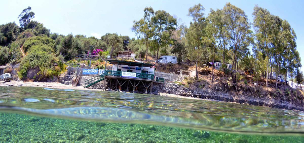
SSI diving instructor and marine biologist, Mauro is a lover of nature and has a visceral love for his city as well as for the sea!
Immersed in a breathtaking natural setting, the BLUNAUTA Diving Staff includes marine biologists, underwater / naturalistic guides and instructors. With diving teaching qualification for both adults and children.
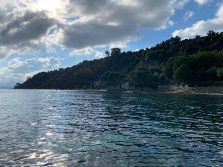
Unlike my friends and other divers present, this is my first dive in the Capo Milazzo AMP.
The Marine Protected Area of Capo Milazzo
Established in March 2019, along the north-eastern coast of Sicily, it was made operational in August 2019. The Capo Milazzo Marine Protected Area Management Consortium is composed of the Municipality of Milazzo, the University of Messina (Department of chemical, biological, pharmaceutical and environmental sciences) and the Marevivo Onlus Association.
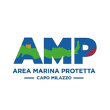
The A.M.P is an area that encloses in its perimeter a variety of landscapes, cliffs overlooking the sea, enchanting beaches and breathtaking sunsets.
When it comes to sea protection, the role of the coastal strip must first be considered: it has been shown that the marine ecosystem is also managed by protecting the border with the emerged land.
The purpose of the AMP lies in subjecting the promontory of Capo Milazzo and the two adjacent areas that develop to the east and west of the Capo promontory to conservation and protection measures.
The Marine Protected Area is divided into four areas (A, B, Bs and C). Full, general, general, special and partial reserve. Areas that have different access possibilities and limitations in usability. It is advisable to inquire about the rules first!
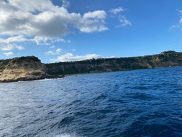
The site is rich in naturalistic features that make it unique: coves and caves, fossil deposits and, underwater, you can admire large white and yellow gorgonians, red fans, Posidonia oceanica meadows, black coral.
Of course, there is no shortage of fish: Mauro told me that already after 6 months of starting the AMP, the seabed was significantly repopulated with different types of fish which have become rare to observe. Think of the red, brown and golden groupers, schools of barracudas, bream, tuna, and lobsters.
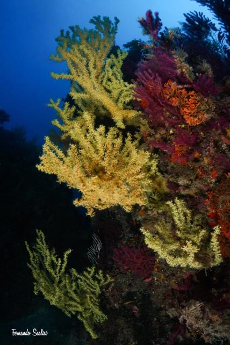
The Secca di Ponente
We left for the first dive and 10 minutes later we docked the dinghy at the Secca di Ponente buoy.
The summit of the Secca di Ponente reaches a depth of 8 meters in some points, winds between 12 and 15 meters for about three hundred in length and is about 300 meters from the coast. The depth varies between 14 and 40. Offering the diver a conformation rich in ravines, small and large hollow caves, imposing rocks and chromatic variations. Ranging from the orange walls of Astroides calycularis, to the blue and pink of porifera and madrepores. The spectacle of nature that presents itself to our eyes gives us the presence of large schools of barracudas, brown groupers, very dense schools of various fish. Which almost envelop us in their synchronous swimming.
Kissed by luck we also meet the San Pietro…
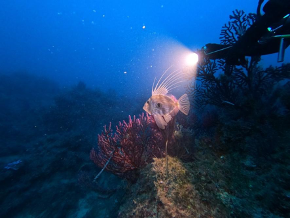
NB: You will notice that this photo, which was taken by the writer by pure chance but with great skill and reactivity by Mauro (in the face of so much inexperience in the field of underwater photography …) does not have a quality comparable to the wonderful shots of friends Fernando Scalici and Holy Tirnetta!
North of the Secca di Ponente, some ISPRA research campaigns have led to the discovery of a vast forest of black coral (Antipathella subpinnata). The name is related to the black color of the skeleton, while the polyps are white.
Do not miss the very rare gorgon star (Astrospartus mediterraneus). It has five arms, which branch out several times forming dozens of bizarre and eccentric spirals, with which it clings to the gorgonians. It is a passive filter that feeds on plankton via its open tentacles. The sighting of this extraordinary animal is a truly rare emotion and its presence is certainly a significant demonstration of the great biodiversity of the sea of Capo Milazzo.
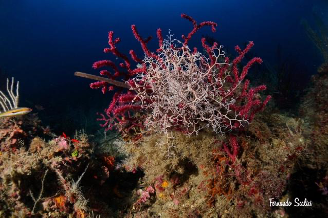
You will surely have already guessed it: it was really difficult to want to go back to the surface! We were enchanted by the biodiversity present in the depths of Capo Milazzo also rich in finds of historical and archaeological interest as evidenced by the numerous underwater findings.
The Shoal of Levante
For the second dive, Mauro took us to the Secca di Levante.
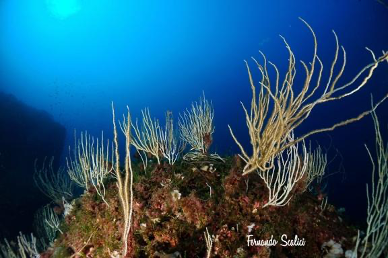
A dip in the blue up to 20 meters deep, then a splendid scenery with the top of the shoal that has many cracks, ravines, spiers and suggestive caves.
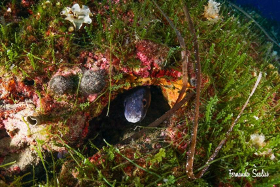
Here you can meet groupers, white breams, amberjacks, huge morays, large salps and schools of barracudas. Of particular beauty is the immersion in the cave located at the base of the shoal itself.
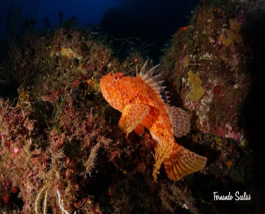
The walls are covered with large sponges, bryozoans, spirographs, lightning urchins, while the backdrop is characterized by a carpet of organic remains of shells, madrepores and bryozoans. At the bottom of the cave there is a ravine full of prawns which often hosts some large conger cones.
We often found ourselves finning among schools of red groupers, large salps and barracudas that are stationed in mid-water.
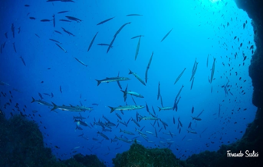
The importance of Marine Protected Areas
Well, I would like to take the opportunity of this wonderful day to underline the importance of MPAs as they favor the maintenance of ecosystem productivity, safeguarding essential ecological processes by controlling activities that could compromise functionality or otherwise damage the environment. natural.
The main purpose of MPAs is therefore the conservation of the genetic resources of species and ecosystems which can only take place through the ecological processes generated by the natural resources themselves!
Therefore, their sustainable use is of the highest importance from both an environmental and economic point of view.
For example, maintaining biological productivity has an essential impact on fishing activities; in fact, it appears undisputed that economic and social well-being is strongly linked to profitable ecological processes since a highly productive area, in terms of fish biomass, allows a higher standard of living for all operators in the sector.
Next Friday we will try to understand why it is essential to think about increasing the protection and protection of the sea. Because they will have to increase the Marine Protected Areas. Because their role will become vital for sustainable growth and peaceful coexistence between all operators.


